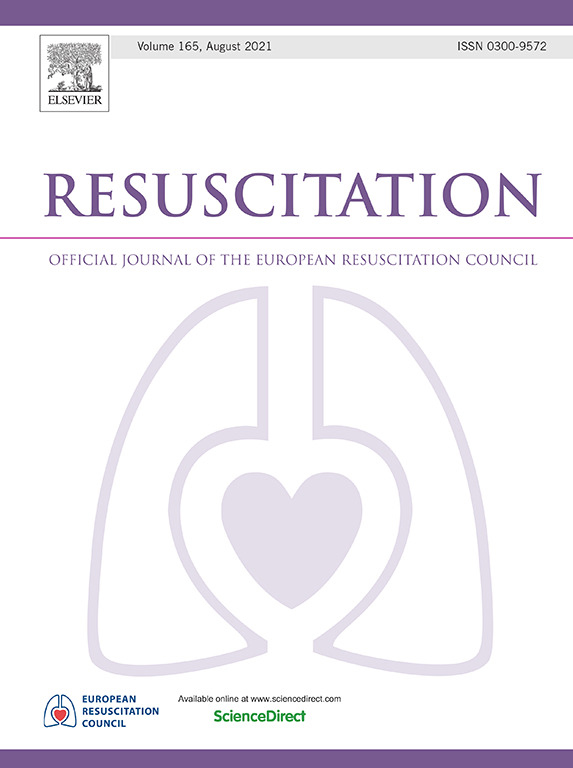心脏骤停后的氧气和二氧化碳目标:一项最新的系统综述
IF 6.5
1区 医学
Q1 CRITICAL CARE MEDICINE
引用次数: 0
摘要
目的:对心脏骤停后自主循环持续恢复患者的氧和二氧化碳指标进行最新的系统回顾和荟萃分析。方法从2019年8月至2025年3月,在MEDLINE、Embase和循证医学评论中检索比较心脏骤停后患者特定氧或二氧化碳目标的随机试验。两名研究者独立审查了试验的相关性,提取了数据,并评估了偏倚风险。使用随机效应模型汇总数据。使用GRADE方法评估证据的确定性。结果纳入12篇试验的15篇文献。所有试验均局限于成年患者,主要包括院外心脏骤停。5项试验评估院前环境中的氧指标,6项评估重症监护病房环境中的氧指标,3项评估二氧化碳指标。大多数结果的偏倚风险被评估为中等。荟萃分析发现,在两种情况下,当比较限制性和自由氧目标时,生存率和有利的功能结果没有差异。当比较轻度高碳酸血症和正常碳酸血症时,结果也没有差异。证据的确定性被评为低到中等。结论:在心脏骤停复苏的患者中,与常规目标相比,限制性氧目标和轻度高碳酸血症都没有改善生存或功能结局。本文章由计算机程序翻译,如有差异,请以英文原文为准。
Oxygen and carbon dioxide targets after cardiac arrest: an updated systematic review
Aim
To perform an updated systematic review and meta-analysis of oxygen and carbon dioxide targets in patients with sustained return of spontaneous circulation after cardiac arrest.
Methods
Searches were conducted in MEDLINE, Embase, and Evidence-Based Medicine Reviews from August 2019 to March 2025 for randomised trials comparing specific oxygen or carbon dioxide targets in post-cardiac arrest patients. Two investigators independently reviewed trials for relevance, extracted data, and assessed risk of bias. Data were pooled using random-effects models. The certainty of evidence was evaluated using GRADE methodology.
Results
Fifteen manuscripts from 12 trials were included. All trials were limited to adult patients, primarily including out-of-hospital cardiac arrests. Five trials evaluated oxygen targets in the prehospital setting, while six evaluated oxygen targets and three evaluated carbon dioxide targets in the intensive care unit setting. Risk of bias was assessed as moderate for most outcomes. Meta-analyses found no differences in survival or favourable functional outcomes when comparing restrictive to liberal oxygen targets in either setting. There was also no difference in outcomes when comparing mild hypercapnia to normocapnia. The certainty of evidence was rated as low to moderate.
Conclusions
Among patients resuscitated from cardiac arrest, neither restrictive oxygen targets nor mild hypercapnia, compared to conventional targets, improved survival or functional outcomes.
求助全文
通过发布文献求助,成功后即可免费获取论文全文。
去求助
来源期刊

Resuscitation
医学-急救医学
CiteScore
12.00
自引率
18.50%
发文量
556
审稿时长
21 days
期刊介绍:
Resuscitation is a monthly international and interdisciplinary medical journal. The papers published deal with the aetiology, pathophysiology and prevention of cardiac arrest, resuscitation training, clinical resuscitation, and experimental resuscitation research, although papers relating to animal studies will be published only if they are of exceptional interest and related directly to clinical cardiopulmonary resuscitation. Papers relating to trauma are published occasionally but the majority of these concern traumatic cardiac arrest.
 求助内容:
求助内容: 应助结果提醒方式:
应助结果提醒方式:


